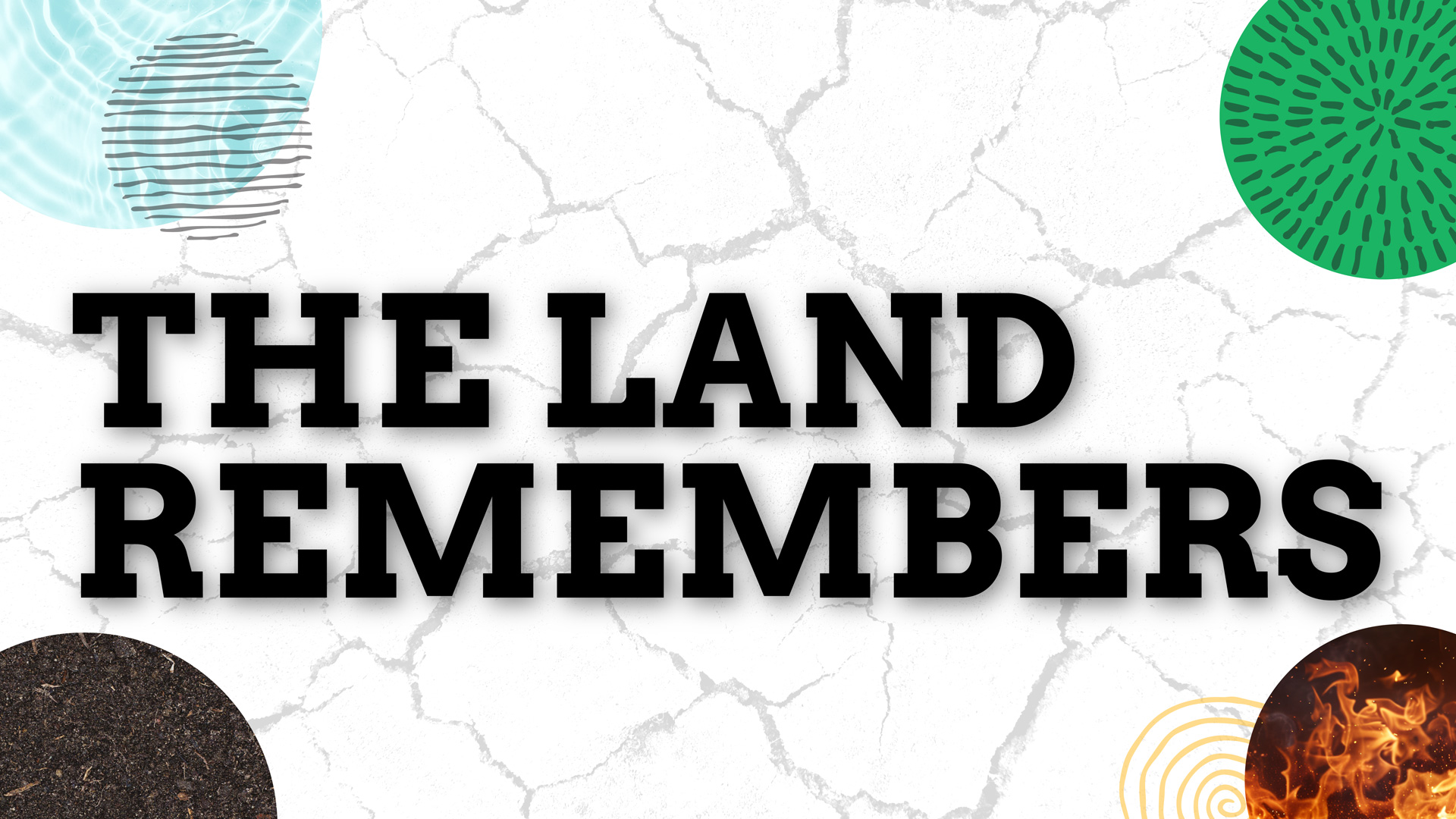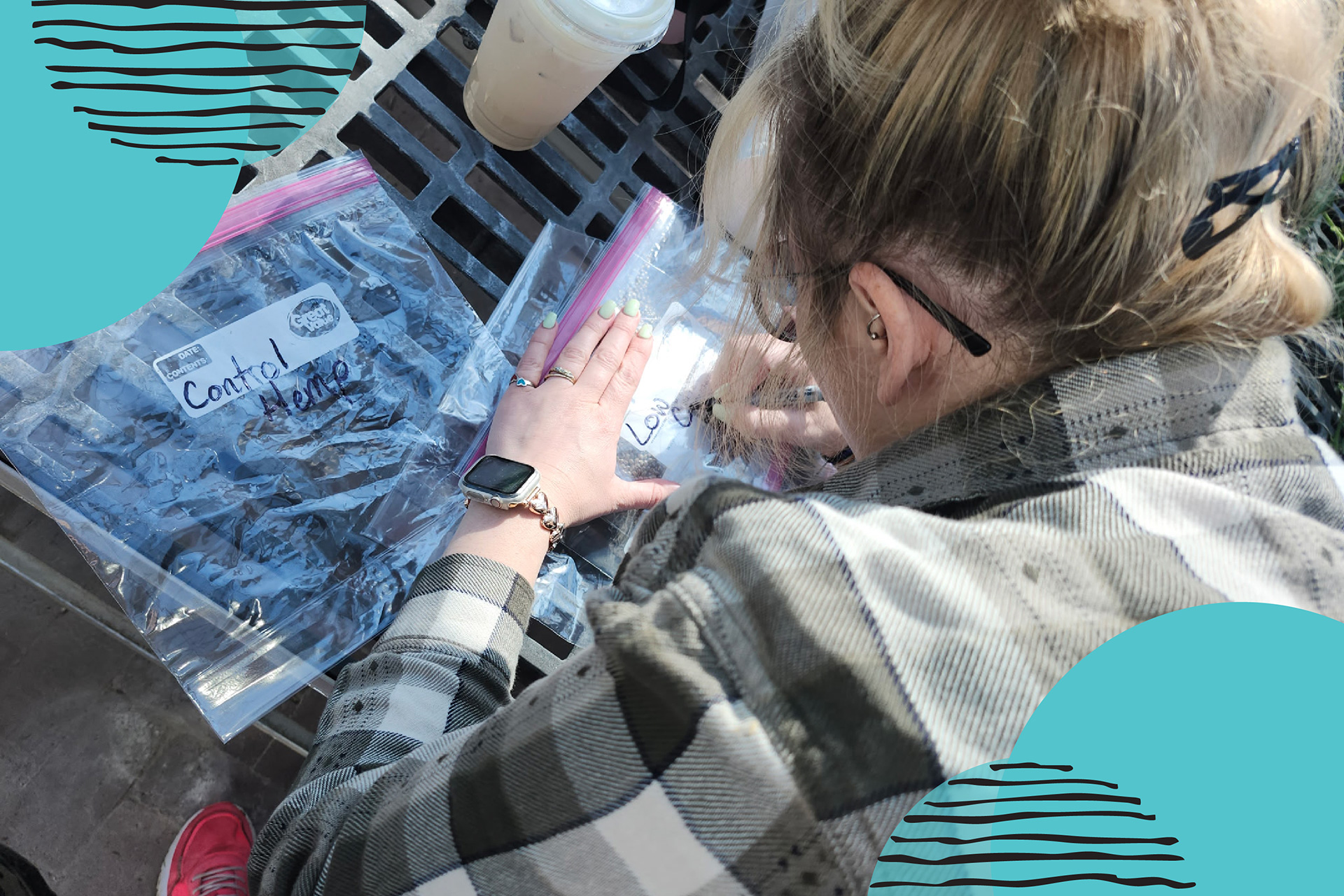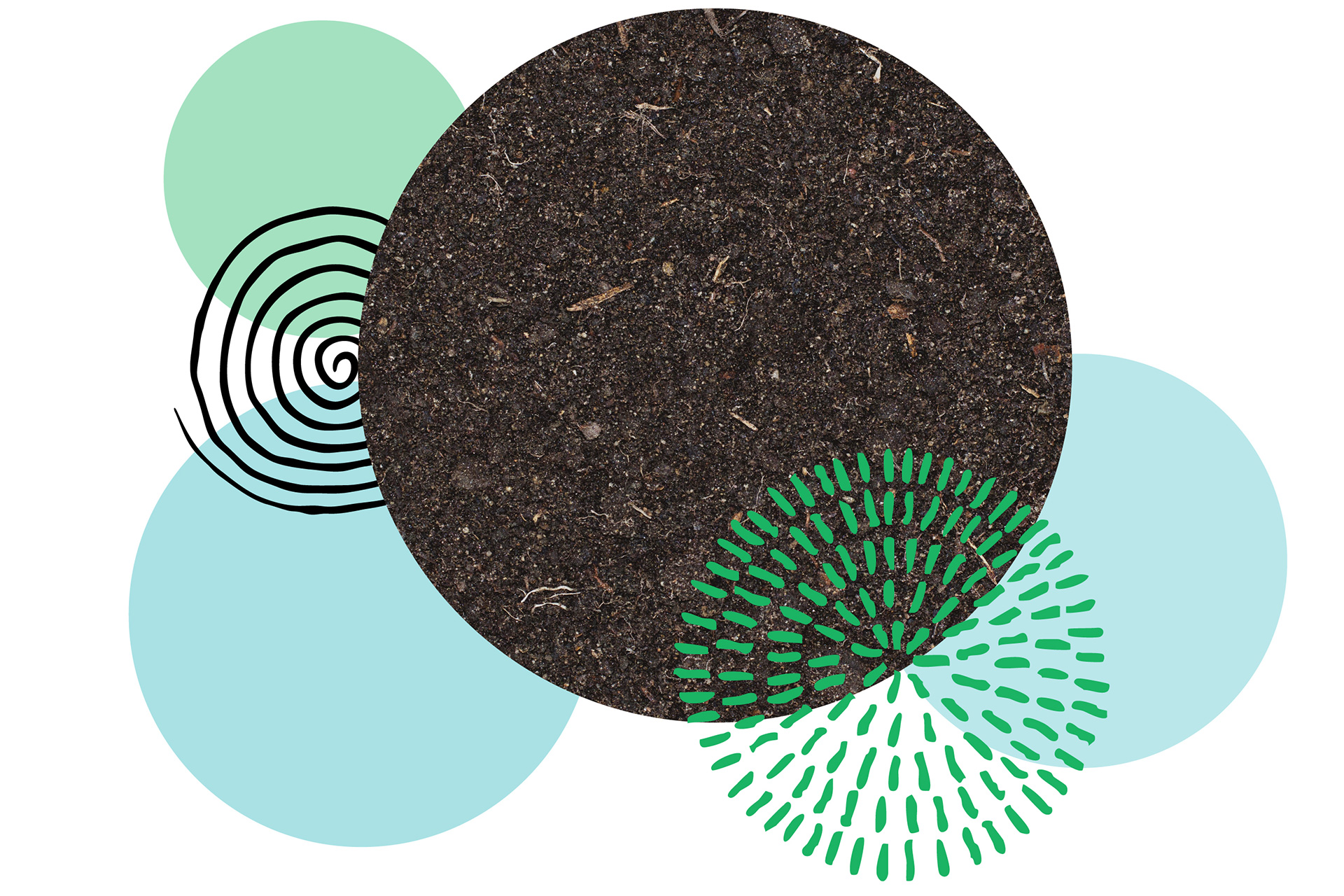The Land
Remembers
The Land
Remembers

Fire devastates. It blackens hillsides, consumes homes, and leaves the air thick with ash. Fire can also act as a beginning; it clears old pathways and makes way for new ideas. For Amanda Hinton (BS '19), the 2022 Hermit's Peak and Calf Canyon wildfires weren't only scars on the New Mexico landscape, they were a renewal in her own life that sparked purpose.

"The fires hit really close to home," Hinton said, remembering the flames. Her family's ranch was among the many affected by the blaze. From that devastation, she came to understand how scorched land can threaten not just the soil but also the safety of livestock and the health of entire ecosystems. As a graduate student at Eastern New Mexico University, Hinton now leads a research project focused on remediating toxic heavy metals, like those left behind in fire-damaged soils.
Hinton is researching how certain crops can naturally absorb toxic heavy metals from the soil, to prevent further leaching of these metals into the groundwater and ecosystem. Assistant Professor of Environmental Toxicology, and one of Amanda's co-advisors, Dr. Corey Green, speaks fondly of the potential impact of the research. "[Her] work has the potential to change the way we manage the impacts on wildfire and provide us with a means of recovering our landscapes much quicker," he said.
Her work extends beyond wildfire recovery. With the help of Dr. Green and Assistant Professor of Agricultural Science, Dr. Anuoluwapo Ogunleye, her other co-advisor, Hinton is investigating broader applications of her research in remediating contaminated land for agricultural use. "Amanda has the potential to be a force of change in her community, considering that her project is personal to her and she is driven by wanting to proffer solutions to the current problems plaguing her community," Ogunleye said.

In agreement, Green highlights the collaborative nature of Eastern's biology and agricultural departments: "Amanda's project is a good example of this collaborative environment. I am an expert in environmental toxicology but primarily focus on freshwater vertebrate species. Dr. Ogunleye is an agricultural botanist but does not have a lot of experience with toxicology. We work together to complement our respective expertise to give Amanda the best foundation possible," Green said.
“[Her] work has the potential to change the way we manage the impacts on wildfire and provide us with a means of recovering our landscapes much quicker,”
Together, they designed a study to investigate the concentration of heavy metals like arsenic, lead, and mercury in soil collected from fire-affected areas. These metals, often released from burned structures and exposed mineral deposits, can leach into the groundwater, posing long-term damage to agriculture and risk to public health. Hinton selected specific crops for their known ability to absorb certain heavy metals, so she can research a natural and sustainable approach to soil remediation.
While this area of science isn't completely foreign to Hinton, she admits it comes with a learning curve. "I don't have a green thumb when it comes to plants," she laughed. "But I'm expecting to see what plants do better and how well they grow together." Trial and error, however, are a part of the research process she fully embraces. A smile plays on her lips as Hinton remarks, "Science is probably my favorite subject overall. I like finding answers, and I like how one experiment could potentially lead to more questions to be answered."

A first-generation college student and Portales native, Hinton's path through education has taken many turns. "Life kind of moved me around," she said. Hinton began at ENMU in 2012 before transferring to other institutions. She earned her associate degree from Odessa College in 2015 and then returned to Eastern to complete her bachelor's in 2019.
After taking years off from school to raise her children, she returned to Eastern with renewed confidence, real-world experience, and a focused sense of purpose . With clarity, Hinton expressed why she waited to go back to the classroom, "I chose to wait until both of my children were enrolled in school full-time. But returning felt right." Hinton knows this is the right place and time for her, noting, "It allowed me to remain close to my hometown." The devastation of the 2022 Hermit's Peak and Calf Canyon wildfires, also close to home, further ignited her passion. Their smoke, now dissipated, signaled a need for deeper understanding of the damage left in their wake.
Though her family didn't farm directly, Hinton grew up in an agricultural community, always surrounded by the rhythms of land and livestock. Her father worked as a serviceman for PBI Parlor Systems, a global manufacturer of dairy equipment. Her proximity to agriculture planted seeds of interest that later grew into her academic passion, driving her to pursue a master's degree in agriculture with a focus on horticulture and ecological toxicology.

In her first semester back, Hinton hit several milestones: she presented at her first research conference, the 60th Annual Water Conference hosted by the New Mexico Water Resources Research Institute (WRRI) and secured a $7,500 grant from WRRI to fund her research. Replaying the scene in her mind, Hinton described the conference, "It was my first time presenting a poster and my very first conference ever. I don't want to say it was a culture shock, but it was definitely a new experience. I met a lot of very interesting individuals from all over the state who work in multiple departments. They were very interested and supportive."
The grant application process was intense, she admitted. "It took me three weeks of going back and forth with revisions before we sent it in," she said. "Dr. Green helped me keep things in perspective. He told me, 'It's not your doctoral or your thesis,' and that really helped."
Hinton reflects on her experience at Eastern thus far, a genuine warmth in her voice as she speaks of the support she has received. With the support of advisors across disciplines, her research has become the first of its kind in the region. "I've had lots of colleagues give me advice on tweaking things here and there, just kind of reassuring me that I'm basically the expert in my research because nobody else has done it. I'll be the first one," she said. "And of course, Dr. Green and Dr. Ogunleye have both been very helpful."
Her work reflects the circle of life: decomposing trees, rain cycles, the protective seeds that sprout after the intense heat of a fire.

“There's a cycle here," she said. "Fires clear out land but also allows for rebirth. It's the same with this project. I'm trying to help the land recover.”
Hinton's future is focused: finish her master's, complete her experiments, and watch as her findings inform how we restore and protect fire-ravaged landscapes. Her story is one of resilience, rebirth, and the quiet power of returning home—to the land, to science, and to herself.
Amanda is a mother, a first-generation student, a scientist, and a daughter of New Mexico, with roots that run deep in the soil she now works to heal. Hers is a story of renewal, a story of rediscovering purpose and nurturing resilience. It's about returning, with intention, to the place that shaped her, and helping it rise again.
The land remembers fire, but it also remembers rain, roots, and those who return to make it whole again. In Amanda Hinton's hands, that healing has already begun.

